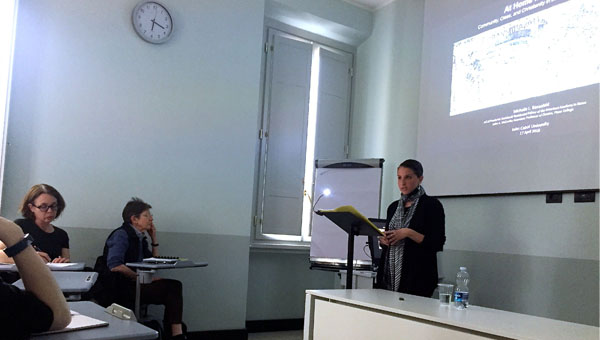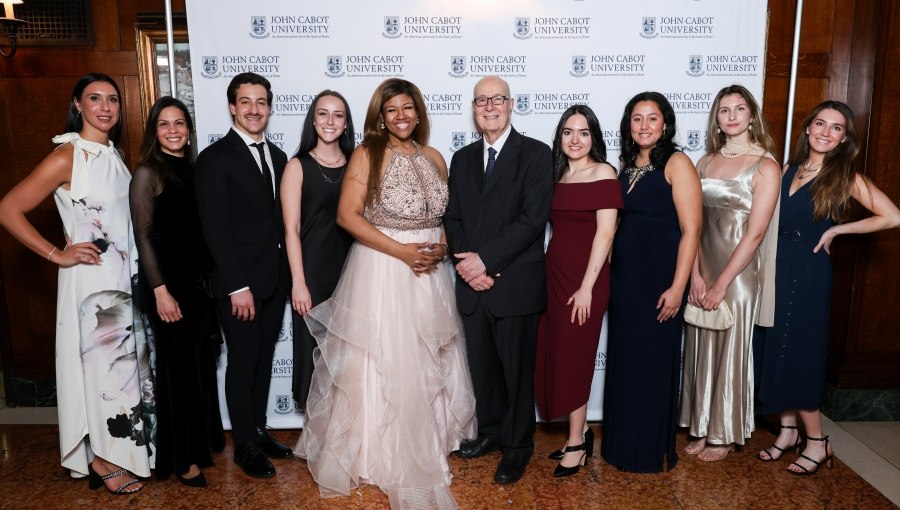Exploring Christianity in the Later Roman Empire: Michelle Berenfeld
On April 17th, 2018 John Cabot University Department of Art History organized the public lecture “At Home in the City: Community, Class, and Christianity in the Later Roman Empire.” The guest speaker was Michelle Berenfeld, currently the ACLS/Frederick Burkhardt Residential Fellow of the American Academy in Rome. Dr. Berenfeld was this year’s Dorothy and Lewis B. Cullman/National Endowment for the Humanities Post-Doctoral Rome Prize Fellow. She is the John A. McCarthy Associate Professor of Classics at Pitzer College, in Claremont, California. Her research focuses on domestic architecture and urbanism in the eastern Roman empire and North Africa. She has carried out fieldwork in Turkey, Jordan, Egypt, and Greece.
The ‘Christianization’ of the Roman empire was a major transformation of the ancient world and continues to shape our world today.
The talk considered how class and religion intersected in the built environments of late antique neighborhoods in Rome, Carthage, and Athens and how the broad historical processes of the fourth century CE may have been experienced as they were happening on the ground and on a human scale.
Professor Berenfeld explained that pagans and Christians lived together during this period and that the upper classes were the main influencers of the transformation. Athens, Carthage, and Rome were the wealthiest parts of the Empire, therefore they played an important role in the process. They were also cities where many people crossed paths, so an active cultural interaction took place.
Constantine the Great, the first Christian Roman emperor, saw the benefits of becoming the head of the Church and he founded many churches and basilicas in Rome such as St. John Lateran. However, Professor Berenfeld argued that the “Christianization” of the Empire didn’t happen quickly, and certainly not in Constantine’s time, for many cities refused to change.
Professor Berenfeld then talked separately about Athens, Carthage, and Rome. Athens was the “college town” with the best schools of the Empire where students had the opportunity to develop relationships that would be beneficial to them in the future. Julian the Apostate, Saint Basil the Great, and Gregory of Nazianzus are important historical figures who studied in Athens.
Carthage was the “breadbasket of the Empire” where much of the area was terraced and most houses had sea views. There were large imperial baths in the city, which was considered a sign of wealth. Carthaginians knew each other even though it was a large city and they accepted each other regardless of their different views and beliefs. Professor Berenfeld argued that “elite property became Church property, more people converted.”
Lastly, Professor Berenfeld talked about Rome. The Celian Hill was one of the richest neighborhoods in antiquity where churches were built on antique houses. The Basilica of Saints John and Paul is an example of this, since it was built over the home of two Roman soldiers. Professor Berenfeld described the structure of the neighborhood by taking the audience on a visual tour.






